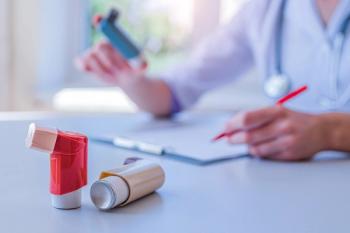
A disruptive innovation
Obamacare is here. Although the staggered implementation schedule has many health care providers unsure of how best to serve the influx of new patients, community hospitals and primary care clinics that serve our urban poor need to be ready to implement a “disruptive innovation.”
Obamacare is here. Although the staggered implementation schedule has many health care providers unsure of how best to serve the influx of new patients, community hospitals and primary care clinics that serve our urban poor need to be ready to implement a “disruptive innovation.”
A disruptive innovation is a term usually applied to information technology. It emerges when a new idea completely and forever changes the way that we think about technology. Our medical system needs a disruptive innovation in order to systematically address our patients’ lack of basic social needs (eg, unstable housing, food insecurity, lack of physical activity, and child care) within the framework of the doctor’s office. If we tackle health inequities within the patient exam room by way of technology, then physicians can practice the art of medicine more effectively and efficiently. Thus, we will improve quality of care, decrease cost, and positively impact population health.
I instruct pediatricians in training at the Children's Hospital and Research Center Oakland Primary Care Clinic. Doctors in training recite patient stories and propose treatment plans. As their supervising physician, I listen and gauge their ability to make evidence-based recommendations.
Recently, I worked with a doctor in training who discussed with me a family of color-5 children and both parents-living in a 1-bedroom apartment. The walls in the kitchen and bathroom are covered in mold. The 3-year-old girl is not yet talking. The 4-year-old boy has asthma, coughs nightly, and has been to the emergency department (ED) 5 times this year. The 13-year-old brother is failing school. There is not enough food and the family is getting evicted. I could go on. This scenario occurs every day.
At our Federally Qualified Health Center (FQHC), 98% of our patients are on MediCal, which means they live under the federal poverty level. Our health care providers are dedicated and work tirelessly. Yet, as with most FQHCs, our clinics are overflowing and our EDs are oversaturated. The poor, largely comprised of communities of color, suffer the heaviest burden of chronic disease. Prescribing treatments that target individual disease and not the health inequities that underlie illness will not cure our patients' ailments. We must demand that the system invoke real-world change, because the way that we are currently practicing medicine for the urban poor is simply not working.
A new program is being piloted in Oakland, California, that may provide 1 solution. The program is called the Family Information and Navigation Desk (FIND). When a family comes for a clinic visit, they will, via mobile electronic devices, be screened for their basic social needs. A positive survey will trigger the physician to refer the family to FIND. Health care professionals will be trained to understand why health inequities exist and how these inequities directly impact health.
A parent staff navigator, someone who is also a community resident, will have the technological tools to link families to community organizations and other institutions that can respond to their basic needs.
For instance, the local shelter can post open beds for homeless families. The food bank can post resources, such as a shipment of fresh produce. A family member can post that he or she received helpful instructions about accessing special education tools from the local school district. Community centers can post about local events and new projects. Regionally, community organizations jointly input and edit data. Grassroots community organizing can enter the medical home via the Web. FIND is family centered. FIND helps coordinates care.
Because of FIND, the parent navigator of the 3-year-old girl referenced in the case above was referred to a bilingual community behavioral development program. A home case manager was sent to the family’s home to speak with the parents about asthma. The 13-year-old boy was given free passes to the local YMCA’s Family Nights, as well as after-school tutoring programs. The parents were connected to our Medical Legal Partnership in order to mediate their eviction and the mold problem that triggered the 4-year-old boy’s asthma in the first place. FIND allows me to be a better doctor.
Information technology can transform the way that we practice medicine by screening for health inequalities and galvanizing communities to work together in order to treat our patients’ social determinates of health.
That’s why FIND is a disruptive innovation and why I urge the technology industry to partner with safety net hospitals and clinics in order to help serve our most vulnerable citizens.
Together, we can change the practice of medicine and, ultimately, the health of our nation.
Dayna Long, MDDR LONG is staff pediatrician at Children’s Hospital and Research Center Oakland Primary Care Clinic, California. The clinic is designated a Federally Qualified Health Center under Section 330 of the Public Health Service Act.
Newsletter
Access practical, evidence-based guidance to support better care for our youngest patients. Join our email list for the latest clinical updates.







